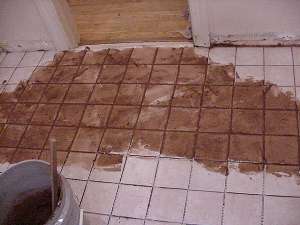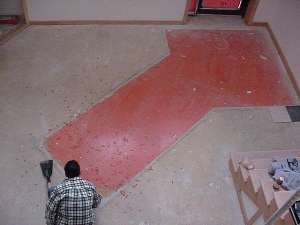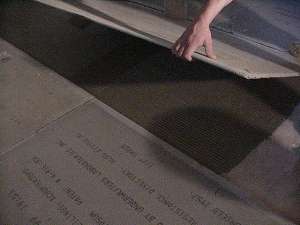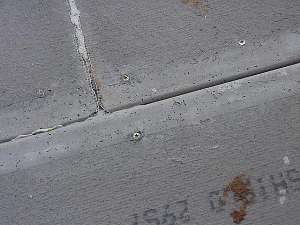|
Grouting the Tile
After the tile adhesive has had time to dry (usually
overnight but check the package) it is time to grout the tile. There are two
types of grout: sanded and unsanded. Sanded grout is used for joints 1/8" and
wider. Most floors have joints that are at least 1/8" but if your joints are
narrower, use unsanded grout.
Grout is also available pre-mixed or dry. Bulk grout
is usually dry. The dry mix is easy to blend, just follow the instructions.
The consistency should be between soupy and thick. It shouldn't run, nor should
it be so thick that you can't force it into the joints (gaps).
After the grout is ready to go, take your foam rubber
float or other appropriate implement and scoop some grout out. Place the grout
on the floor and ,holding the rubber float at a 45 degree angle to the work
piece, run the float parallel to the joints in the tile. Round up the excess
grout and run the float over the surface several times in order to fill in the
joints. When the joints are full, run the float over the surface at a 45 degree
angle to the joints in order to level the joints and remove excess grout This
may require several passes.
Cleaning Excess Grout
Cleaning the excess grout is normally a three-step
process. Allow the tile to set up for 15-20 minutes, or until firm, in the
joints. Using a damp sponge wipe any excess grout from the face of the tiles.
If you didn't get the grout in the joints right, this is the time you should do
it. Just make sure you wring as much water as possible from the the sponge.
Rinse out the sponge or rag often enough to keep it clean.
Allow the grout to dry another 45 minutes or until a
haze forms on the tiles. Use a rag (or the sponge) to clean the surface of the
tiles again. Be careful not to rub the grout from the joints. If it seems like
you just can't get the tile clean then let it dry a bit more.
After several hours you should use a clean towel to
polish the tiles.
Curing and Sealing the Grout
For the next three days, before using a grout sealer,
lightly mist the grout. On the fourth day, use a grout sealer to ensure a good
solid installation. These sealers will keep the grout sealed from stains and
water. |

|






